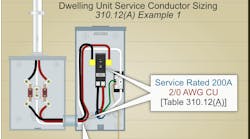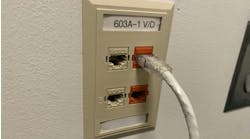The requirements for photovoltaic (PV) system grounding and bonding are in Part V of Art. 690. These underwent only moderate revision with the 2020 National Electrical Code (NEC) cycle. Always keep in mind that “grounding” means connecting to, literally, the ground (earth as stated in the Art. 100 definition).
Grounding provides a path to earth to dissipate lightning and other high-voltage transients. Bonding does the following (grounding does not):
- Provides a low-impedance path back to the source.
- Creates an equipotential plane.
- Eliminates differences of potential.
- Protects against shock hazards.
- Removes undesired circulating currents.
Grounding on the load side of a power source is pointless. You ground the system, not the equipment. Even if the NEC calls for an equipment grounding conductor or installation instructions say “ground” a panel, you bond (not ground).
You bond using a low-impedance metallic pathway. For the equipment grounding (bonding) conductor, you'll find a list of acceptable methods in Sec. 250.118. Various types of raceway, including conduit and tubing, are acceptable.
As you apply the Part V requirements, keep these concepts in mind.




